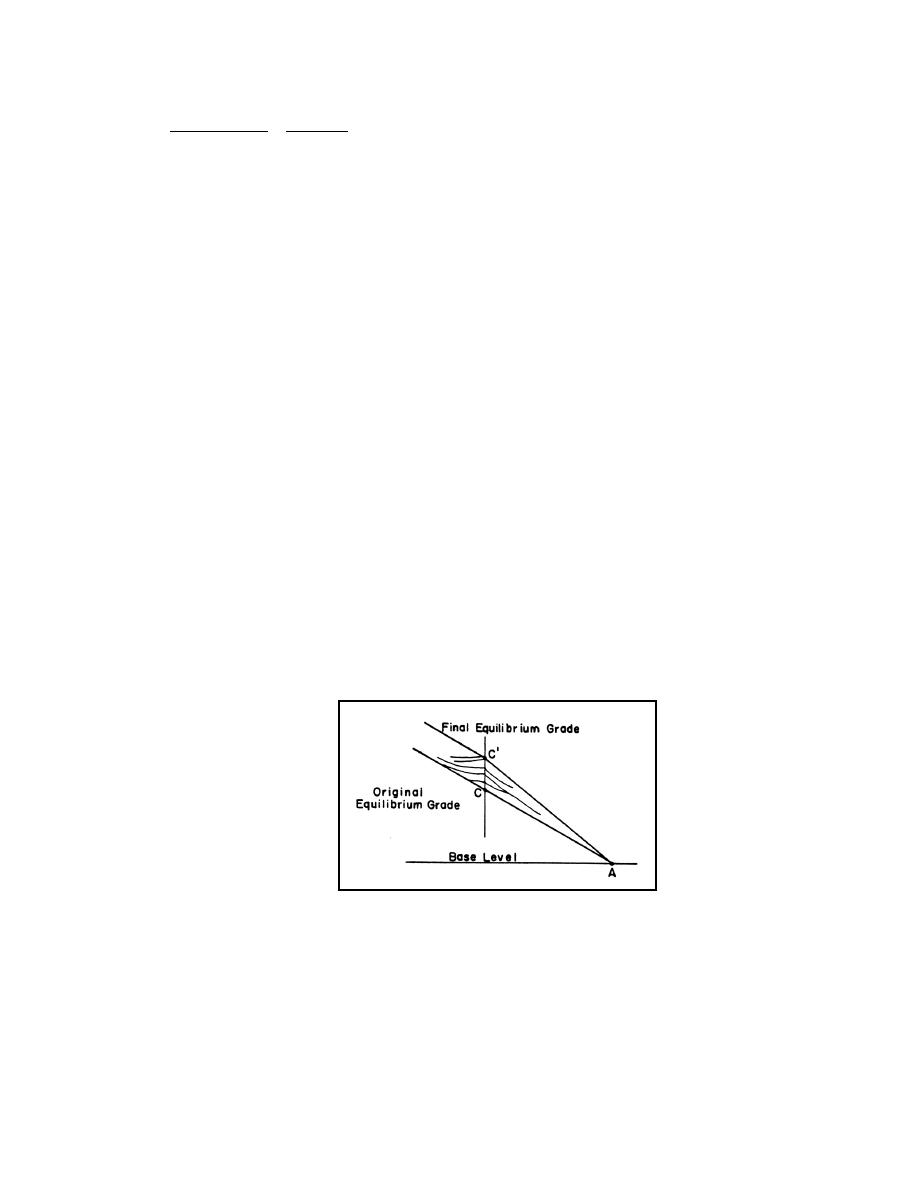
γ y o S W V Cf γ QS Cf
=
Qs ~
(5.15)
D50
D50
If the specific weight, γ, is considered constant and if the concentration of wash load Cf can be
incorporated in the fall diameter, D50, then the relationship can be expressed as:
QS ~ Qs D50
(5.16)
which is the relationship originally proposed by Lane (1955), except Lane used the median
diameter of the bed material as defined by sieving instead of the fall diameter. The fall
diameter includes the effect of temperature on the transportability of the bed material, but use
of physical diameter is sufficiently precise for most qualitative analyses.
The proportionality represented by Equation 5.16 is very useful to qualitatively predict channel
response to climatological changes, river modifications, or both. Two simple example problems
are analyzed using Equation 5.16.
In a first example, consider a tributary entering the main river at point C that is relatively small
but carries a large sediment load (Figure 5.21). This increases the sediment discharge in the
+
main stream from Qs to Q s . It is seen from Equation 5.16 that, for a significant increase in the
+
sediment discharge ( Q s ) the channel gradient (S) below C must increase if Q and D50 remain
constant. The line CA (indicating the original channel gradient) therefore changes with time to
position C'A. Upstream of the confluence the slope will adjust over a long period of time to the
original channel slope. The river bed will aggrade from C to C'. This change may induce a
change in the channel morphology downstream of point C as the downstream reach may tend
toward braiding. This possible change in planform geometry must be considered if any
structure is to be built between points A and C'.
Figure 5.21. Changes in channel slope in response to an increase in sediment load at Point C.
In a second example, the construction of a dam on a river usually causes a decrease in
sediment discharge downstream. Referring to Figure 5.22, and using Equation 5.16 and the
earlier discussion, it can be concluded that for a decrease in bed material discharge from Qs to
-
Q s , the slope S decreases downstream of the dam (assuming discharge and sediment size
remain unchanged). In Figure 5.22, the line CA, representing the original channel gradient,
5.30




 Previous Page
Previous Page
